|
Article I: Waste and Recycling - How You Can Prevent the Spread of COVID-19
Article II: Recycling Center Plus Modified Operations
Article III: Road Construction Detours Traffic to Solid Waste Facilities
Article IV: Celebrating Earth Day at Home
Article V: Disposal Discussion - "Grass-Cycle" Clippings at Home
Waste and Recycling - How You Can Prevent the Spread of COVID-19
A few months ago, most of us had never heard of a coronavirus. Now, we hear it many times a day. Because of this thing we cannot even see, our lives have changed in many ways. Parents have had to become teachers, we’re wearing masks at the grocery store, and we have had to physically distance ourselves from friends and family.
Nevertheless, garbage and recycling don’t stop. Waste haulers continue to collect garbage and recyclables. The Olmsted Waste-to-Energy Facility is still operating 24-7 to handle our garbage. The Kalmar Landfill is processing bulky items into fuel and depositing non-burnable waste. Materials recovery facilities are sorting out recyclables collected at the curb. The demand for paper and cardboard has dramatically increased as both items play an essential role in the supply chain. Manufacturing plants are still operating to turn those materials into new products.
These services are an essential part of the response to the pandemic. The men and women in the waste and recycling industry are working to protect human health and the environment. We can help protect them by taking the following steps:
• Wash your hands before taking out your trash or handling recyclables
• Place all trash in a plastic bag and tie the bag shut before throwing it away
• Do not overload your garbage and recycling containers — each container cover should close completely
• Make sure all garbage and recyclables are placed inside their respective containers — items left outside of a container will NOT be collected
• Place all recyclables loosely in your recycling cart — all items should be clean, dry, and empty
• Never place medical waste such as masks, gloves, wipes, or tissues, in your recycling cart
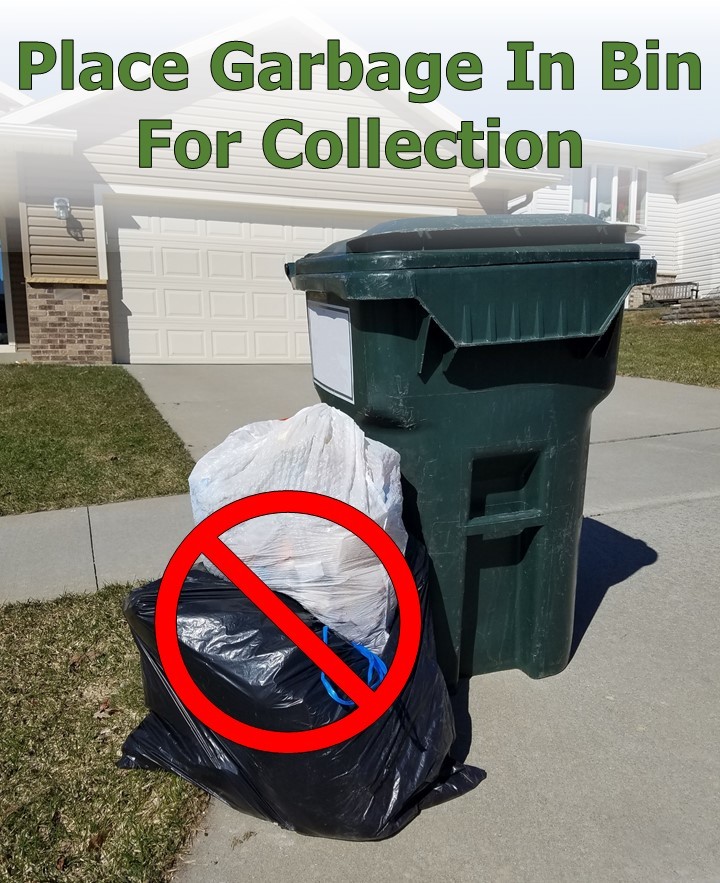 Always place garbage and recyclables inside their respective containers, photo credit: Anthony Wittmer
Recycling Center Plus Modified Operations
The pandemic has also impacted the Olmsted County Recycling Center Plus. The facility has modified its hours (Tuesday - Saturday, 8:00 AM - 4:30 PM) and operations. Currently, all business is taking place outside the facility.
Traffic flow has been altered to eliminate close contact and streamline the disposal process. Fee payments require cash or check only. Staff cannot make change or process credit cards. The map below depicts the new flow of traffic through the facility.
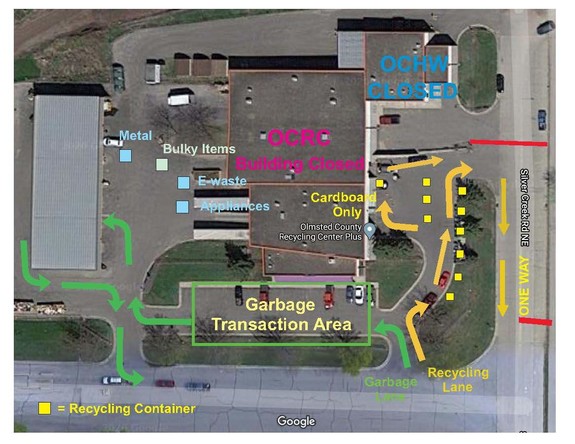 We appreciate residents' flexibility in adapting to the changes at the facility. With warmer weather returning, traffic at the facility will increase. The following tips will help to safely speed up the disposal process for all visitors.
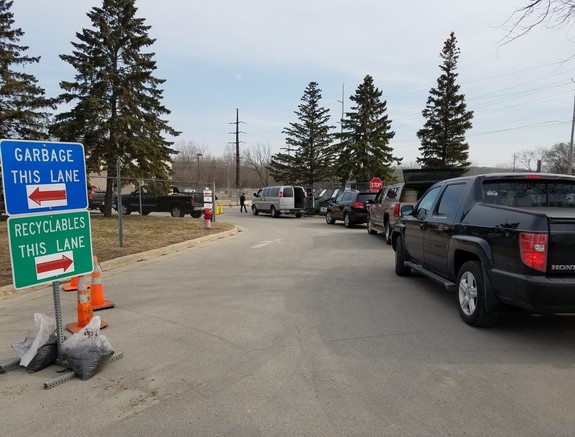 Residents wait in line to drop off recyclables at the Recycling Center Plus, photo credit: Anthony Wittmer
- Visit our website to review fees before you come to the facility. This will help you determine how much cash to bring.
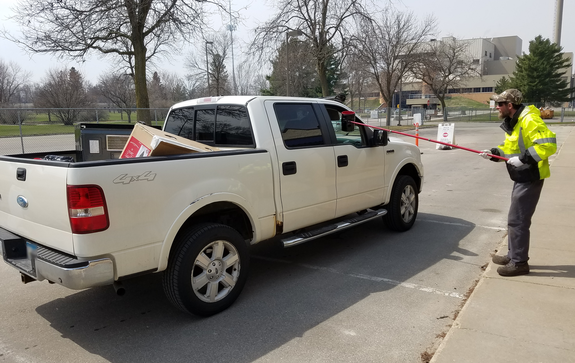 A customer pays a fee for garbage and bulky items at the Recycling Center Plus, photo credit: Anthony Wittmer
Road Construction Detours Traffic to Solid Waste Facilities
County State Aid Highway (CSAH) 9 – also known as Collegeview Road, is currently under construction. Residents traveling to Olmsted County campus buildings – including the Recycling Center Plus, Hazardous Waste Facility (currently closed), and Compost Site – will need to access Silver Creek Road via Campus Drive SE (come from the west).
More information about the project can be found on Olmsted County's website.
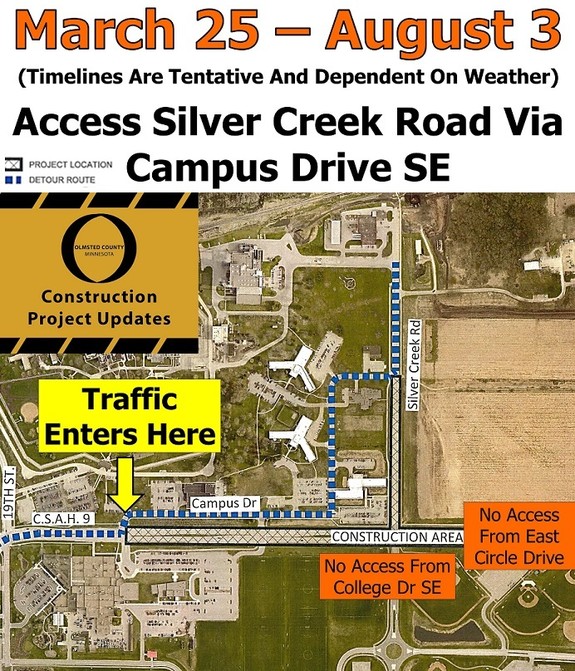
Celebrating Earth Day at Home
Wednesday, April 22nd marks the 50th anniversary of Earth Day! This day is recognized by millions around the world and would typically be celebrated in schools and at various public events. Even though we're asked to physically distance ourselves from one another, there are still plenty of ways to take part in the day.
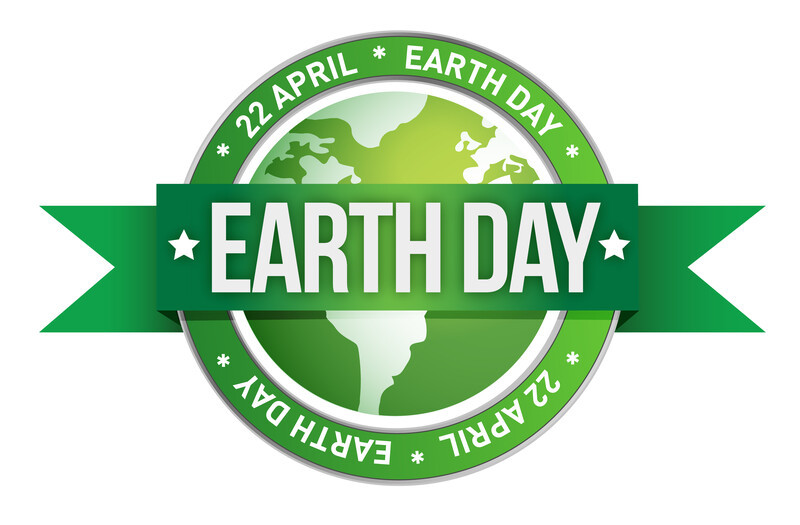
Disposal Discussion - "Grass-Cycle" Your Clippings at Home
Maintaining a yard takes long enough. Save yourself some time and effort by allowing your grass clippings to decompose on your lawn. "As a general rule, grass clippings of an inch or less in length can be left on your lawn where they will filter down to the soil surface and decompose quickly," states the University of Minnesota (U of M) Extension. Keeping your grass clippings on-site has noticeable benefits:
- Grass clippings are a valuable source of nitrogen so you'll save on fertilizer costs
- You won't have to worry about bringing your clippings to a Compost Site so you will save time
- The organic content in the grass clippings can improve your soil if it is sandy, heavy clay, or low in organic matter
In some instances, removing the clippings may be recommended—excessively long clippings can mat together and smother the grass beneath. However, regular mowing will reduce the need to do this.
It's important to remember to sweep grass clippings out of the curb and back onto your lawn as the clippings can travel through storm drains and impair water quality. To learn more, read the U of M Extension's full article.
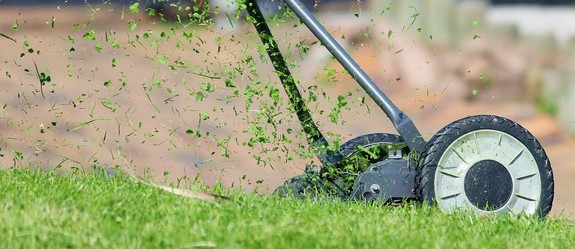
|